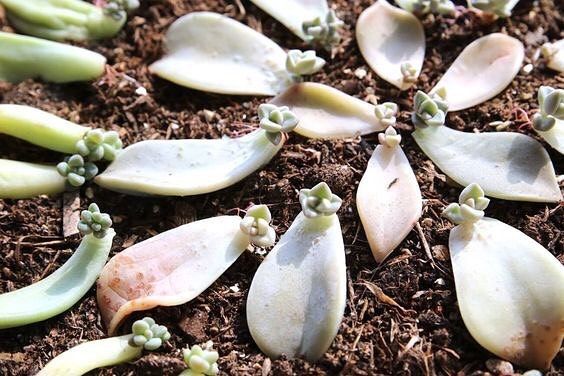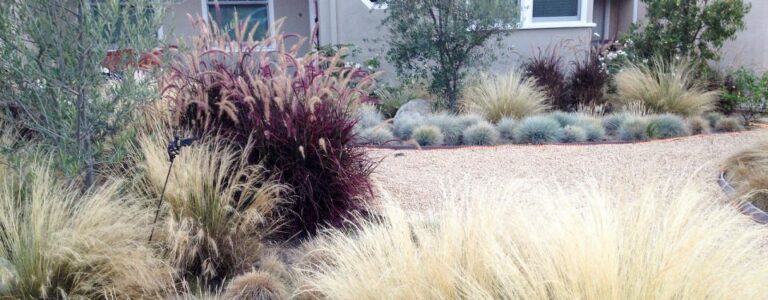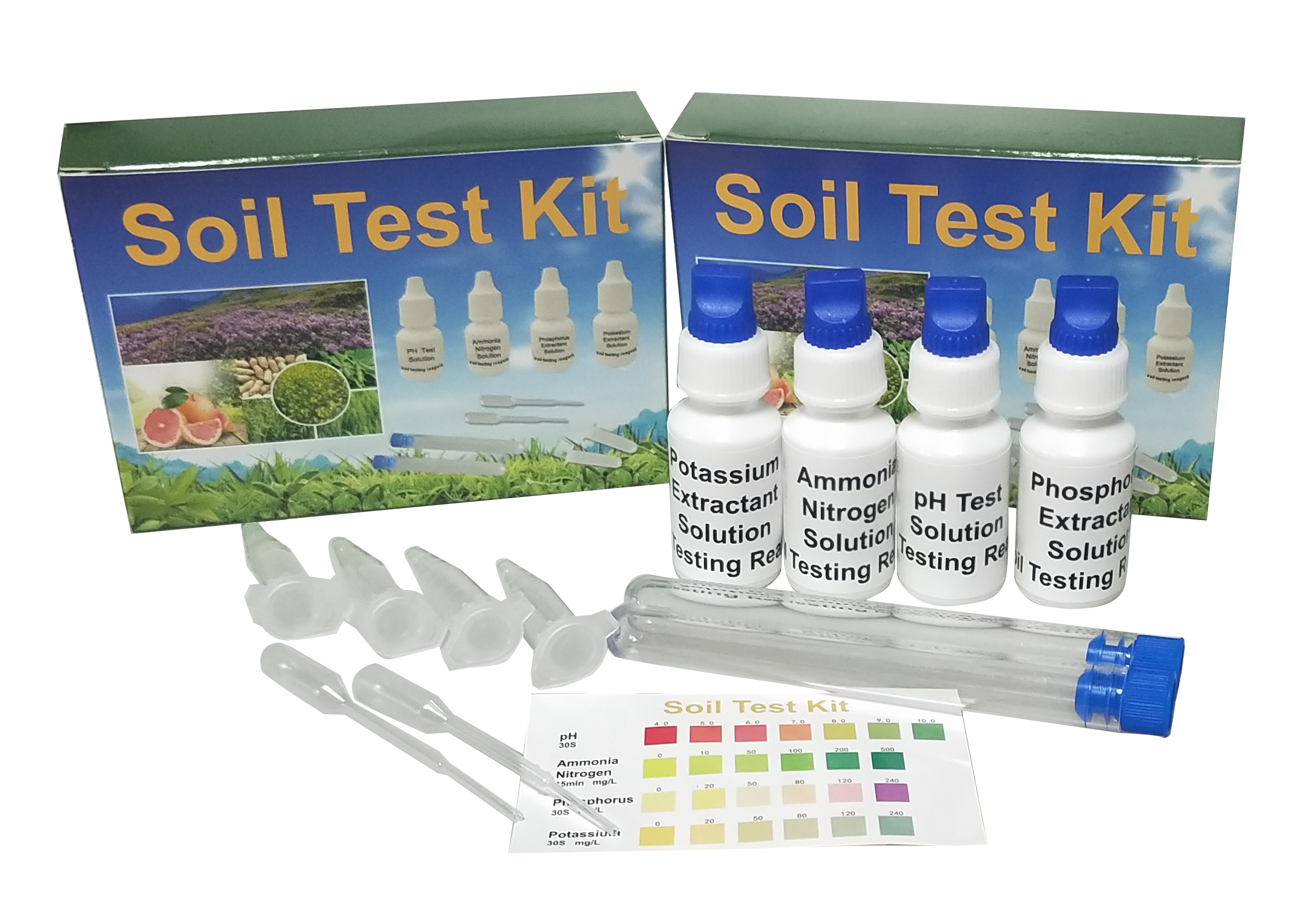
Introduction: The Allure of Succulent Propagation
Succulents, with their diverse shapes, colors, and textures, have captivated plant enthusiasts worldwide. Their ability to thrive in arid conditions, coupled with their low-maintenance nature, makes them ideal for both novice and experienced gardeners. But beyond their aesthetic appeal and ease of care lies an even more rewarding aspect: the ability to propagate them. Succulent propagation is the art and science of creating new plants from existing ones, a process that not only expands your collection but also offers a profound sense of accomplishment. This comprehensive guide will delve into the intricacies of successful succulent propagation, providing you with the knowledge and techniques to multiply your beloved plants and share the joy of succulents with others.
Understanding Succulent Propagation: Methods and Mechanisms
Succulent propagation is not a one-size-fits-all process. Different succulent species exhibit varying propagation methods. Understanding these methods is crucial for success. The primary methods of succulent propagation include:
1. Leaf Propagation
This is perhaps the most common and accessible method. It involves taking individual leaves from the parent plant and coaxing them to develop roots and eventually, new plantlets. The process is relatively simple but requires patience and attention to detail.
2. Stem Cuttings
Stem cuttings involve taking a segment of the stem, allowing it to callous over, and then rooting it in soil. This method is often used for succulents with more elongated stems, such as Sedums and Echeverias.
3. Offsets (Pups)
Many succulents produce offsets, also known as pups, which are miniature versions of the parent plant that grow at the base or sides. These offsets can be gently separated from the parent plant and replanted.
4. Seeds
While less common for many succulent species due to their slow growth rate and specific germination requirements, seed propagation is an option. It requires patience, specialized knowledge, and controlled conditions.
The success of any propagation method hinges on understanding how succulents naturally reproduce. Succulents have evolved to survive in harsh environments, and their propagation strategies reflect this adaptation. Leaf propagation, for example, takes advantage of the leaf’s ability to store water and nutrients, allowing it to sustain a new plantlet. Stem cuttings utilize the plant’s regenerative capabilities to form roots. Offsets are essentially clones of the parent plant, ensuring genetic consistency. By understanding these mechanisms, you can optimize your propagation efforts and increase your chances of success.
Essential Tools and Materials for Succulent Propagation
Before you embark on your propagation journey, gather the necessary tools and materials. Having the right equipment will streamline the process and maximize your chances of success. Here’s a list of essentials:
- Sharp Knife or Scissors: Essential for taking clean cuts when propagating with leaves or stem cuttings. A clean cut prevents disease and promotes faster rooting.
- Potting Mix: A well-draining succulent potting mix is crucial. Avoid mixes that retain too much moisture, as this can lead to rot. A blend of potting soil, perlite, and coarse sand is often ideal.
- Small Pots or Trays: Choose pots or trays with drainage holes to prevent waterlogging. Terracotta pots are a good option as they allow for better air circulation.
- Watering Can or Spray Bottle: For gentle watering. A spray bottle is particularly useful for misting newly propagated leaves or cuttings.
- Rooting Hormone (Optional): Rooting hormone can accelerate root development, but it’s not always necessary.
- Gloves (Optional): Protect your hands from potential irritants in the potting mix or from the plant’s sap.
- Labels and Markers: To identify the different types of succulents you are propagating.
Leaf Propagation: A Step-by-Step Guide
Leaf propagation is a rewarding and relatively easy way to multiply your succulents. Here’s a step-by-step guide to help you succeed:
- Select Healthy Leaves: Choose healthy, plump leaves from the parent plant. Avoid leaves that are damaged, diseased, or showing signs of stress.
- Gently Remove the Leaves: Carefully twist the leaf away from the stem, ensuring that you remove the entire leaf, including the base. If the leaf tears, it may not propagate successfully. If the leaf doesn’t detach easily, use a clean knife or scissors to make a clean cut as close to the stem as possible.
- Allow the Leaves to Callous: Place the leaves on a tray or in a well-ventilated area. Allow them to callous over for several days to a week. This process allows the cut end to dry and prevents rot.
- Prepare the Potting Mix: Fill small pots or a tray with well-draining succulent potting mix.
- Place the Leaves on the Soil: Once the leaves have calloused, lay them on top of the soil. Do not bury them.
- Water Sparingly: Mist the soil lightly with a spray bottle. Avoid overwatering, as this can lead to rot. The goal is to keep the soil slightly moist, not soggy.
- Provide Bright, Indirect Light: Place the tray or pots in a location with bright, indirect light. Avoid direct sunlight, which can scorch the leaves.
- Be Patient: Rooting and the development of new plantlets can take several weeks or even months. Be patient and continue to monitor the leaves.
- Transplant the Plantlets: Once the plantlets have developed roots and are large enough, carefully transplant them into individual pots.
Stem Cutting Propagation: A Detailed Approach
Stem cutting propagation is a great way to propagate succulents with stems. Here’s how to do it:
- Choose a Healthy Stem: Select a healthy stem from the parent plant.
- Cut the Stem: Use a clean knife or scissors to cut the stem just below a node (where leaves or branches emerge).
- Remove Lower Leaves: Remove the leaves from the lower portion of the cutting, leaving only a few leaves at the top.
- Allow the Cutting to Callous: Place the cutting in a well-ventilated area and allow it to callous over for several days to a week. This is crucial to prevent rot.
- Prepare the Potting Mix: Fill small pots with well-draining succulent potting mix.
- Plant the Cutting: Insert the calloused end of the cutting into the soil. You can bury the cutting about an inch deep.
- Water Sparingly: Water the soil lightly, keeping it slightly moist. Avoid overwatering.
- Provide Bright, Indirect Light: Place the pot in a location with bright, indirect light.
- Wait for Roots to Develop: Roots will typically develop within a few weeks. You can gently tug on the cutting to see if it has rooted.
- Transplant the Plant: Once the cutting has rooted, transplant it into a larger pot.
Offset Propagation: Separating and Replanting Pups
Offset propagation is the easiest method for succulents that produce pups. Here’s how to do it:
- Identify the Offsets: Look for small plantlets growing at the base or sides of the parent plant.
- Wait for the Offsets to Mature: Allow the offsets to grow to a reasonable size before separating them from the parent plant.
- Gently Separate the Offsets: Carefully separate the offsets from the parent plant. You can often do this by gently pulling them apart. If the offsets are firmly attached, use a clean knife to cut them away.
- Allow the Offsets to Callous: Allow the cut end of the offset to callous over for a few days.
- Prepare the Potting Mix: Fill small pots with well-draining succulent potting mix.
- Plant the Offsets: Plant the offsets in the soil, making sure to bury the roots.
- Water Sparingly: Water the soil lightly, keeping it slightly moist.
- Provide Bright, Indirect Light: Place the pots in a location with bright, indirect light.
- Care for the Offsets: Care for the offsets as you would care for mature succulents.
Seed Propagation: A Less Common but Rewarding Method
Seed propagation requires more patience and specialized knowledge. Here’s an overview:
- Obtain Seeds: Acquire succulent seeds from a reputable source.
- Prepare the Seed Tray: Fill a seed tray with a well-draining seed-starting mix.
- Sow the Seeds: Sprinkle the seeds on the surface of the soil. Do not bury them.
- Mist the Soil: Mist the soil lightly with a spray bottle.
- Provide Humidity: Cover the seed tray with a clear lid or plastic wrap to create a humid environment.
- Provide Bright, Indirect Light: Place the seed tray in a location with bright, indirect light.
- Keep the Soil Moist: Monitor the soil and mist it regularly to keep it moist.
- Be Patient: Germination can take several weeks or even months.
- Transplant the Seedlings: Once the seedlings are large enough to handle, transplant them into individual pots.
Common Mistakes to Avoid in Succulent Propagation
Even with the best intentions, mistakes can happen. Here are some common pitfalls to avoid:
- Overwatering: This is the most common mistake. Succulents are drought-tolerant and susceptible to rot if overwatered.
- Using the Wrong Potting Mix: A well-draining potting mix is essential. Avoid mixes that retain too much moisture.
- Exposing to Direct Sunlight Too Soon: Newly propagated succulents are sensitive to direct sunlight. Gradually acclimate them to brighter conditions.
- Not Allowing Callousing: Callousing is crucial to prevent rot. Always allow leaves and cuttings to callous before planting.
- Using Dull Tools: Dull tools can damage the plant and increase the risk of disease.
- Lack of Patience: Succulent propagation takes time. Don’t get discouraged if you don’t see results immediately.
Troubleshooting Common Propagation Problems
Even with the best practices, problems can arise. Here’s how to troubleshoot common issues:
- Rotting: This is often caused by overwatering or a poorly draining potting mix. Remove the affected leaves or cuttings and adjust your watering practices.
- Failure to Root: This can be caused by a variety of factors, including insufficient light, improper callousing, or using a nutrient-poor potting mix. Ensure you are following the proper steps.
- Pests: Mealybugs and other pests can sometimes infest newly propagated succulents. Inspect your plants regularly and treat any infestations promptly.
Caring for Your Newly Propagated Succulents
Once your succulents have successfully rooted, it’s time to care for them. Here’s what you need to know:
- Watering: Water your succulents deeply but infrequently. Allow the soil to dry out completely between waterings.
- Light: Provide bright, indirect light. Avoid direct sunlight, especially during the hottest part of the day.
- Soil: Use a well-draining succulent potting mix.
- Fertilizing: Fertilize your succulents sparingly during the growing season (spring and summer). Use a balanced fertilizer diluted to half strength.
- Repotting: Repot your succulents when they outgrow their pots or when the soil becomes compacted.
Tips for Success: Propagation Secrets from the Pros
Here are some extra tips to help you achieve succulent propagation success:
- Experiment with Different Species: Some succulents are easier to propagate than others. Start with beginner-friendly species like Echeverias, Sedums, and Sempervivums.
- Provide Adequate Air Circulation: Good air circulation helps prevent rot. Ensure your succulents are not overcrowded and that the area is well-ventilated.
- Keep Your Tools Clean: Clean tools help prevent the spread of diseases. Sanitize your tools before and after each use.
- Observe Your Plants: Pay attention to your plants and learn to recognize the signs of stress or disease. This will help you address problems early on.
- Don’t Be Afraid to Experiment: Succulent propagation is an art as well as a science. Don’t be afraid to try different techniques and see what works best for you.
Conclusion: The Rewarding Journey of Succulent Propagation
Succulent propagation is a fulfilling and rewarding experience. It allows you to expand your collection, share your passion with others, and gain a deeper appreciation for the beauty and resilience of these fascinating plants. With patience, the right techniques, and a little bit of practice, you can become a successful succulent propagator and enjoy the endless possibilities of these amazing plants. So, gather your materials, choose your succulents, and embark on this exciting journey. The world of succulent propagation awaits!


